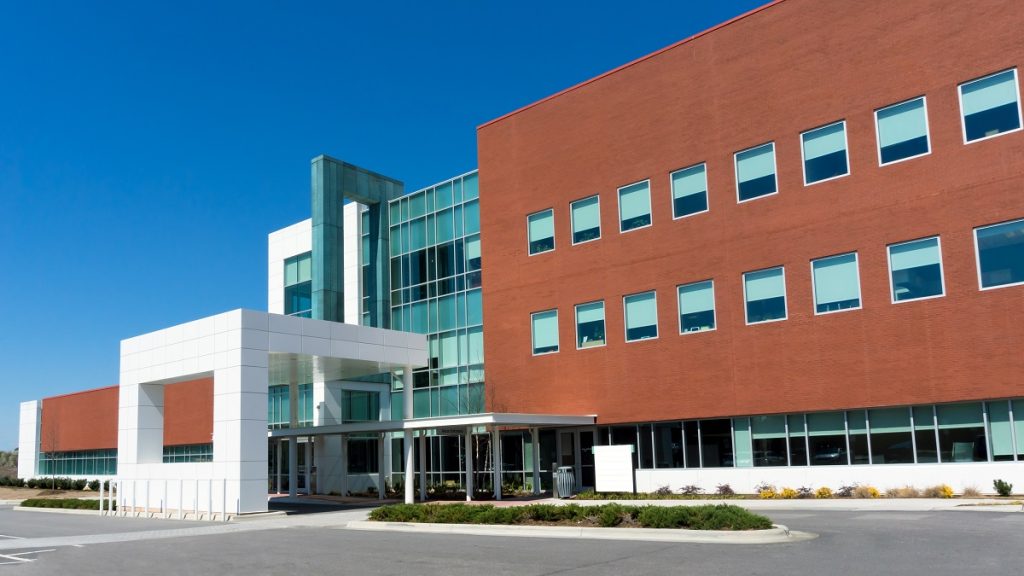- Investing in medical real estate targets long-term leases with high population growth, making it a lucrative asset class.
- Factors such as location, tenant considerations, and regulatory compliance must be considered before investing in medical real estate.
- Diversifying your portfolio and investing in properties with specialized medical facility design and management can maximize returns.
- Cleanroom design and engineering, accessibility, and energy efficiency are significant factors to consider when investing in medical real estate.
- The rise of the global pandemic and healthcare reforms have increased the demand for healthcare facilities.
Medical real estate investment presents a promising opportunity for investors seeking stable and long-term returns. In light of the global pandemic, the demand for medical facilities is increasing, further bolstering the attractiveness of this investment option.
Investing in medical real estate can diversify their portfolios and potentially maximize their returns. This type of investment offers the potential for stable and consistent cash flow. With the proper research and analysis, investors can identify opportunities to invest in high-quality medical real estate properties.
This blog will discuss the basics of medical real estate investment, its different types, benefits, and the factors you need to consider before investing in medical real estate as well as strategies and facility design.
Understanding Medical Real Estate Investment

Before delving deeper into medical real estate investment, it’s crucial to understand its concept first. Medical real estate investment primarily involves investing in healthcare properties like medical office buildings, senior living communities, medical laboratories, hospital buildings, and medical research centers.
Medical real estate investment is further classified into On-Campus and Off-Campus investments.
On-campus investment refers to the properties located within hospital campuses, while Off-campus investment includes properties situated outside the hospital campuses or town centers. On-campus investments typically target larger hospitals, while Off-campus investments focus on smaller facilities.
Why Invest in Medical Real Estate
Medical real estate investment provides stable and long-term returns since medical facilities require long-term leases. The increasing demand for healthcare facilities due to population growth, aging populations, and healthcare reforms makes medical real estate a rising asset class.
Moreover, medical real estate also provides a hedge against inflation and offers potential tax benefits. It is also considered a safer investment because medical facilities have meager vacancy rates; many are mission-critical and leased for the long term.
Factors to Consider Before Investing in Medical Real Estate
Market Research and Analysis
Before investing in medical real estate, you must analyze the market to identify the demand for healthcare facilities, rental prices, vacancy rates, supply, and competition.
Location and Demographics
Identifying the perfect location is critical to medical real estate investment. You need to choose the site based on the demographics, accessibility, and proximity to medical services.
Regulatory Requirements and Compliance
Medical facilities are highly regulated, and you must ensure compliance with fire codes, zoning, environmental, and safety regulations.
Tenant Considerations
Medical tenants have specialized needs such as medical equipment, infrastructure, and proximity to other medical services. You need to ensure the property can accommodate these unique needs.
Strategies for Maximizing Returns
Diversification of Investment Portfolio
Diversifying your investment portfolio is one of the most effective strategies to maximize returns when investing in medical real estate. Holding too much of one type of investment can result in significant losses if the market takes a turn for the worse.
However, by spreading your investments across various properties, it can reduce your risk while at the same time increasing your returns.
Property Management
Another critical factor that will impact your returns on medical real estate investment is property management. Ensuring that your property is appropriately managed will ensure that it is well-maintained and that tenants are satisfied. A well-maintained property attracts long-term tenants and helps increase the property’s market value.
Facility Design

Subsidizing a property explicitly designed for medical use is crucial. Not all buildings are suited for medical use, and the facility design must meet the specific needs of healthcare providers.
Cleanroom Design and Engineering
When designing a medical facility, cleanroom design and engineering are crucial in creating a sterile environment that minimizes the risk of infections to patients and staff. Cleanrooms promote a hygienic environment that is necessary in a healthcare setting.
The design and engineering of cleanrooms should adhere to strict standards to ensure proper air filtration, temperature control, and contamination prevention.
Accessibility and Ease of Movement for Patients and Staff
Medical facilities require ease of patient access and movement for patients and staff. Medical equipment and supplies must be transported throughout the facility without any hindrance. An efficient facility design allows for easy movement throughout the facility, creating a more comfortable experience for patients and staff.
Flexibility and Adaptability for Future Changes
As technology and medical treatments advance, the medical field is continuously changing. It’s essential to consider the flexibility of a facility when investing in medical real estate. A facility should be able to adapt to future advancements without any significant design changes.
Energy Efficiency and Sustainability
Energy efficiency is becoming increasingly important in today’s world, and medical facilities are not exempt from these demands. Investing in an energy-efficient facility can reduce operating costs, and sustainability initiatives can significantly improve the market value of a property.
Medical real estate investment is an attractive alternative because of its long-term stability and potential for growth. As with any investment, it requires thorough research and analysis, location and population demographics consideration, regulatory compliance, tenant consideration, and diligent due diligence.
Real estate investors need to understand the different types of medical real estate investment and the benefits on offer. Moreover, investing in medical real estate can be an excellent way to maximize returns. By diversifying your investment portfolio and prioritizing property management, you can minimize risk while increasing your returns.
Additionally, a well-designed medical facility that prioritizes cleanliness, accessibility, adaptability, and energy sustainability can considerably increase the market value of your property.

